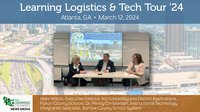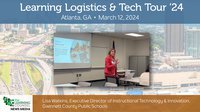When they close the book on this era, 2020 will be remembered as the year of COVID.
2021 was the year that the world learned to live remotely, the year that everything was on the table, and the phrase, “That’s the way we’ve always done it,” was generally removed from educators’ vocabularies.
And 2022 will be remembered for an increased focus on three crucial areas: Skills Certifications, Security Compliance and Student Data Privacy. Think of them as the Big Three; these are the areas that will identify education in 2022.
The rise of certifications
For those students who are headed for a career, or for those of you who would like to reskill for additional opportunities, skills certifications in the areas of Cybersecurity, Software Engineering, Artificial Intelligence, Machine Learning and Data Science may prove to be more lucrative than a four-year college or graduate school degree as employers seek very specific certification programs offered by larger tech companies such as Google, AWS, IBM and Microsoft.
Companies like Coursera administer certification programs from these companies, offering popular programs like Cloud computing—using the internet to store data and services instead of a computer hard drive. The business advisory firm Gartner predicts that Cloud will make up 14 percent of all global enterprise IT spending in 2024, up from nine percent in 2020. In-demand certifications like this lead to richly rewarding comp packages. And cloud computing is a heavily in-demand skill. The average salary for cloud computing professionals in North America is $153,655, according to a report by Global Knowledge. And perhaps the most surprising aspect, the cost of the top ten certification courses from the top companies, offered by Coursera, range from $99 to $2499, with most certifications under $500.
Although this is an opportunity that has been coming for several years, 2022 may be the year in which to cash in. According to experts, areas like cybersecurity have more than a million-person deficit, and that number isn’t going to wane anytime soon. In addition, artificial intelligence is coming into its own for education. Expect AI to employ real Socratic teaching methods over the next three years, as knowledge libraries become sophisticated enough to allow machine learning to really take over classic subject areas and write their own scripts, progressing beyond simple decision engine courseware to real conversational learning and teaching.
The widening skills gap
As this year bears witness to a widening skills gap, there is a shortage of available skilled individuals in the technology sector – and that shortage is continuing to grow at an alarming rate, creating multiple concerns about this scarcity and what it might mean for the future workforce:
- Without a qualified workforce, it’s difficult to compete globally and our country’s economic future could be threatened
- As ransomware and phishing attacks grow more sophisticated and severe, the need for technically capable workers becomes paramount to thwart the threats to our schools, infrastructure, and business
- As student data privacy takes center stage for schools, the need for more high-tech professionals becomes apparent
- AI, AR, and VR are already becoming commonplace in retail, education, healthcare, and other industries, driving demand for technically proficient workers
- Many companies are dropping the college degree requirement and seeking skilled workers who are recent high school graduates
Security is essential
As you may be aware, in 2021 , education was the number one industry attacked by ransomware. According to an article in K-12 Dive, “a whopping 44% of schools experienced a ransomware attack in the last year, with more than half of these victims saying their data had been encrypted in the most significant attacks. Another one-third of schools say that they haven't yet been attacked by ransomware but expect to be in the near future. The most recent guidance from the FBI indicates that K-12 schools actually made up a majority of all ransomware attacks (57 percent) during last year's back to school season.” The cost to schools is high. According to Sophos, “The typical school, district or university pays an average $112,435 ransom payment to get data back and networks running again.” In addition, cyber criminals will generally encrypt the personal identities and financial data of the institution’s students, their parents, and the institution’s staff, all to put pressure on the institution to comply.
Because of this, security compliance of the IT infrastructure and processes used with schools and colleges will be mandated by multiple state and federal government agencies to ensure there is a better defense against ransomware. As such, more school districts will start migrating their on-premise IT infrastructure to better protected Cloud Infrastructure services such as AWS, Google Cloud and Azure. It is simply uncanny the way cybercrime has grown over the past several years.
Though it should have been all along, data privacy compliance is no longer a nice to have ... but an essential requirement for EdTech SaaS vendors. In addition to federal regulations that we are all familiar with, almost every state is getting into the action. And increasingly, personal liability is being attached to the penalties. What was once a slap on the wrist, at least for larger companies that could afford it, is becoming a situation where someone is going to pay with personal assets. In many cases, that someone could be the de facto risk-manager of a school district, such as the superintendent. The days of lax compliance are in the past; carelessly treating student data will not be tolerated in 2022.
An emphasis on Skills Certifications, Security Compliance and Student Data Privacy in 2022 gives everyone in our industry something to build on and promises to offer considerable opportunity for all. And though we may not be out of the COVID woods yet, we are certainly learning how to navigate the forest.
About the author
Robert Iskander is a global business transformation leader passionate about leveraging technology to improve the quality of life for all, with a special focus on K-12 education and was nominated as one of the Top 100 EdTech Influencers in 2017 by EdTech Magazine. Prior to his current role as CEO at GG4L, Robert had several corporate leadership roles over the past 30 years, including General Manager of Sun Microsystems in the Middle East and Global Director of Education at Sun Microsystems (now Oracle). He also ran SchoolMessenger for several years and grew its customer base to 63,000 schools in the US and Canada.











